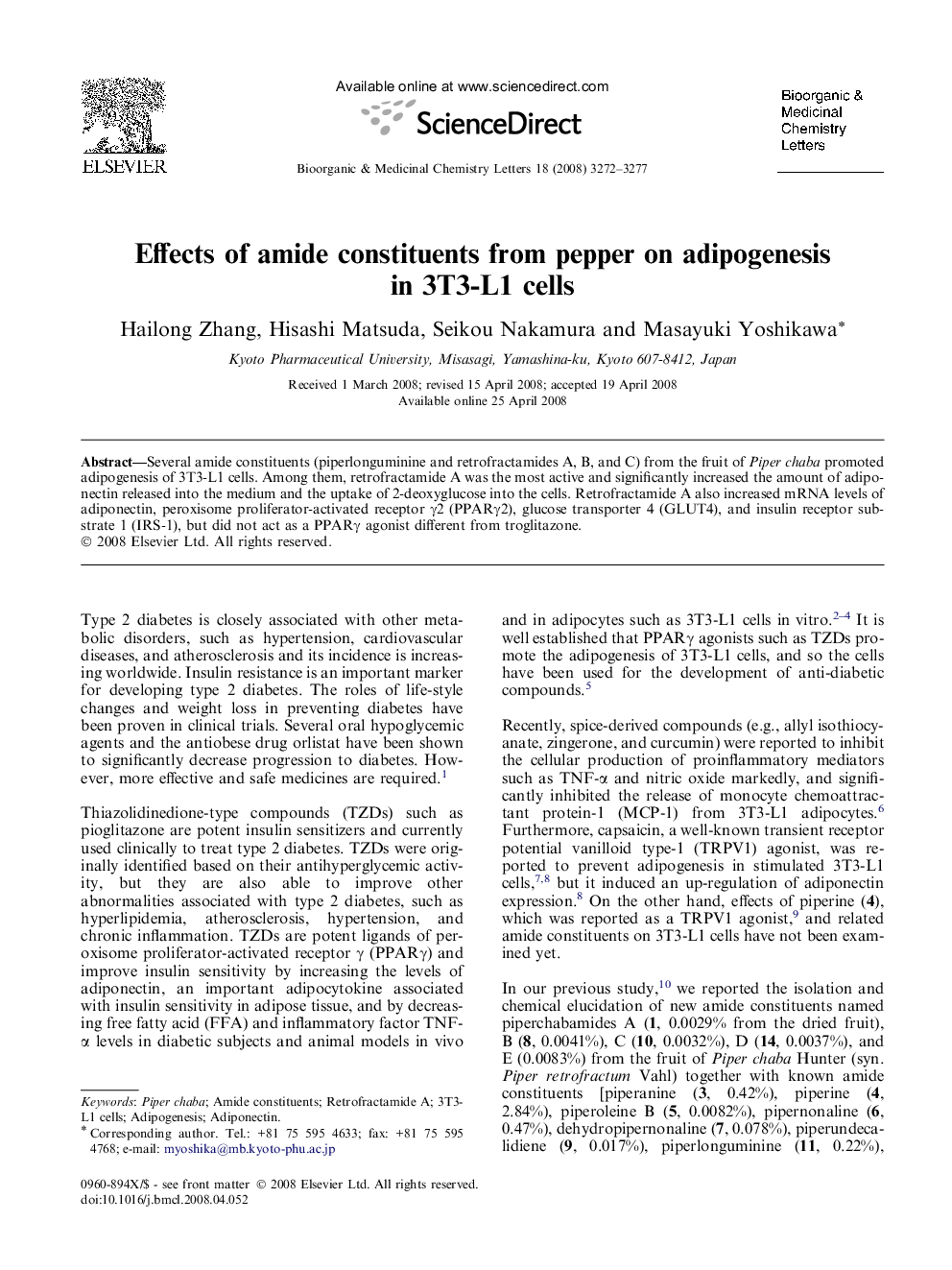| Article ID | Journal | Published Year | Pages | File Type |
|---|---|---|---|---|
| 1376618 | Bioorganic & Medicinal Chemistry Letters | 2008 | 6 Pages |
Several amide constituents (piperlonguminine and retrofractamides A, B, and C) from the fruit of Piper chaba promoted adipogenesis of 3T3-L1 cells. Among them, retrofractamide A was the most active and significantly increased the amount of adiponectin released into the medium and the uptake of 2-deoxyglucose into the cells. Retrofractamide A also increased mRNA levels of adiponectin, peroxisome proliferator-activated receptor γ2 (PPARγ2), glucose transporter 4 (GLUT4), and insulin receptor substrate 1 (IRS-1), but did not act as a PPARγ agonist different from troglitazone.
Graphical abstractSeveral amide constituents (piperlonguminine and retrofractamides A, B, and C) from the fruit of Piper chaba promoted adipogenesis of 3T3-L1 cells. Among them, retrofractamide A was the most active and significantly increased the amount of adiponectin released into the medium and the uptake of 2-deoxyglucose into the cells. Retrofractamide A also increased mRNA levels of adiponectin, peroxisome proliferator-activated receptor γ2 (PPARγ2), glucose transporter 4 (GLUT4), and insulin receptor substrate 1 (IRS-1), but did not act as a PPARγ agonist different from troglitazone.Figure optionsDownload full-size imageDownload as PowerPoint slide
